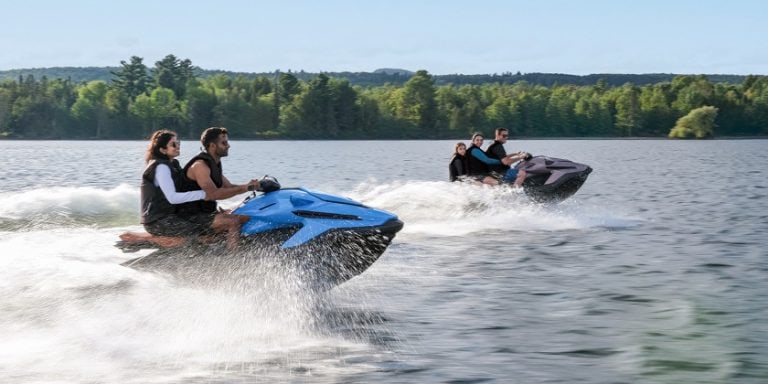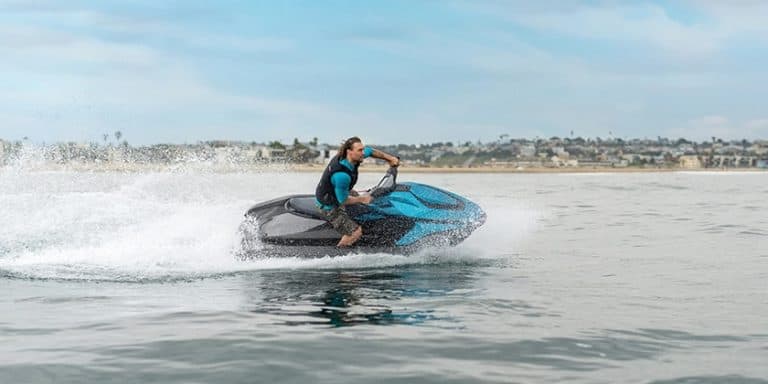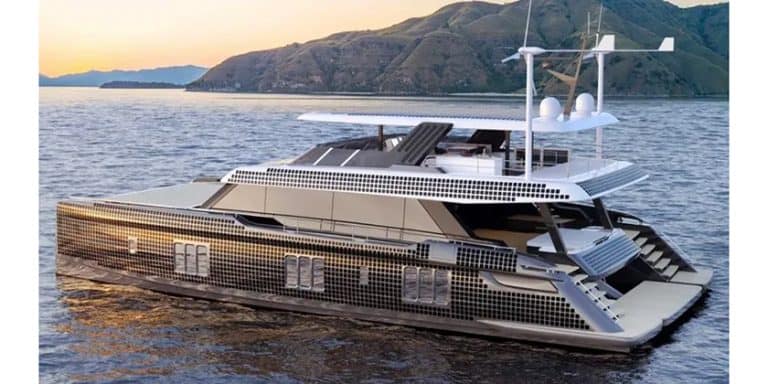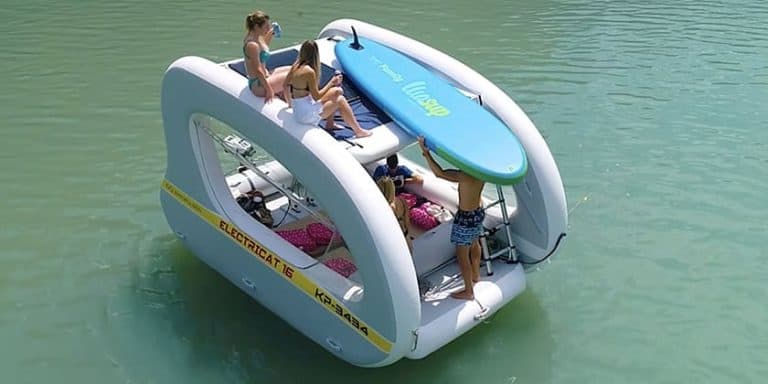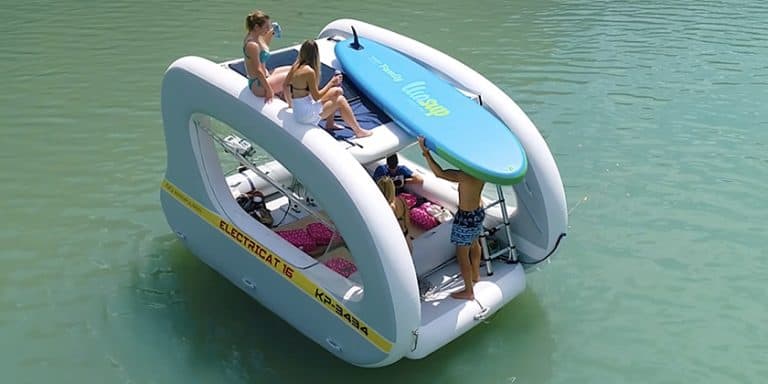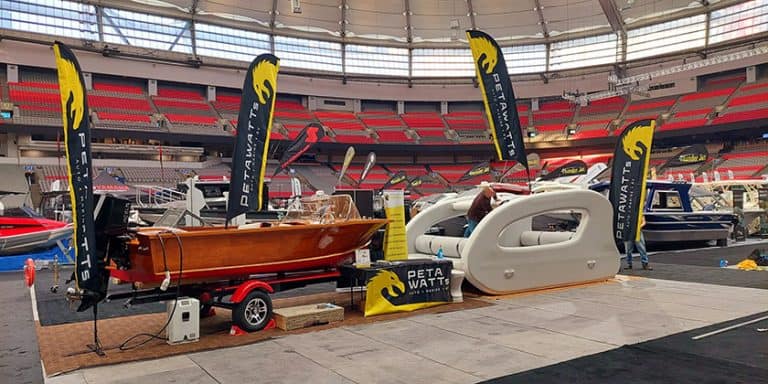Plugboats: Solar Electric Catamaran Uses Wingsail to Increase Range with No Fossil Fuels
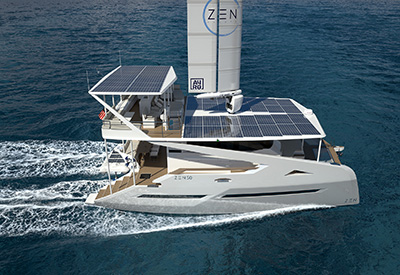
Oct 13, 2022
The ZEN50
One of the challenges of electric propulsion for boats is range. On a fast-planing boat no one wants to be told they can only enjoy it for only a limited time. On an offshore cruiser no one wants to find out they can’t get back to shore.
There are many hybrid systems that have or are being developed to address this. Some, like the new SilentJet Picnic Boat from Hinckley, use a combination of a diesel motor and an electric motor. The diesel (or gasoline) gets you out where you want to be and the electric allows you to cruise there, or closer to shore, in silence.
Some cruising boats with electric motors – sailing or power – have similar dual-power systems. Others use a diesel generator only to charge up the battery that then powers the electric motor. There is also now a lot of interest in using hydrogen fuel cells to extend range because they are lighter than batteries.
ZEN Yachts (Zero Emission Nautic) has a different idea with their ZEN50 solar electric catamaran. It is meant for those who are serious about having a zero carbon emission boat and extends its range using an OceanWings32 wingsail coupled with huge areas of solar panels and an optimized lightweight hull.
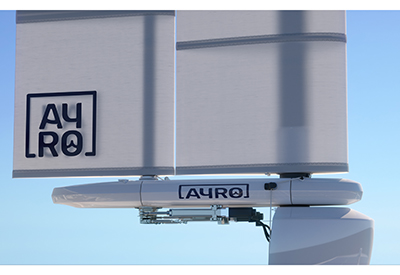 wingsail detail
wingsail detail
The OceanWings32 have been designed and built by Ayro, a spin-off of the French yacht design and naval architecture bureau VLPL. It is an offspring of the Oracle wingsail that changed the course of sailing history by defeating the conventionally rigged Alinghi in the 2010 America’s Cup in Valencia.
VPLP has continued to develop and automate the system since then, and it was installed on the Energy Observer research ship in 2019. The Energy Observer was originally the Formule Tag, built by Canadair in Québec in 1983, under the supervision of Canadian skipper Mike Birch and British designer Nigel Irens.
In 2017 she was lengthened, covered with solar panels, and equipped with electric motors, a hydrogen fuel cell system that harvests hydrogen from the water she sails through…and the VPLP wingsails.
Her home harbour is St. Malo, France, and she is now in the Straits of Malacca in southeast Asia, having sailed more than 20,000 nautical miles with zero emissions of carbon or any particulates. Feedback from her journeys allowed the Ayro team to fine tune the algorithm commanding the wingsail.
The ZEN50 is the first series production leisure craft to feature the Oceanwings32. It was designed by naval architect Julien Mélot, whose solar-electric catamaran Aquanima won the first Gustave Trouvé international electric boat awards in 2020.
“I know from experience that to achieve complete energy self-sufficiency, a true solar boat needs to have a low energy consumption and a large solar roof area to harvest solar energy.” Says Mélot.
“The majority of solar catamarans currently on the market are equipped with a large generator, making them de facto hybrid diesel-solar-electric boats. They offer great speeds in a variety of conditions but are less eco-friendly than true zero-emission vessels.”
That’s where the Oceanwings come in. Instead of firing up an ICE motor, extra speed is achieved by raising the wingsail, which also increases range. The wingsail itself is fully automated and controlled using a touch sceen in the helm. The two parts of the wingsail can be hoisted and lowered independently with the simple touch of a button.
As for speed and range, the company claims a top speed of 14 knots using the twin 50kW electric motors and wingsail together, with a cruising speed of 6-10 knots. Under good conditions that can add up to a range of 180 nm over a 24 hour period.
So will we see wingsails on more electric boats? They are only suitable for vessels of a certain size, of course, but Ayro already has a few other yacht projects underway as well as a 400 foot ocean going cargo ship. On September 22 Royal Huisman unveiled the WING 100, a 330 foot superyacht with two wingsails that each have solar panels built into the masts.
“The emergence of sailing yachts on this scale, with the level of energy efficiency and eco-responsibility offered by WING 100, would have been unthinkable just a decade ago”, said Royal Huisman CEO Jan Timmerman.
While ‘electric boats’ is the term generally used for boats with electric motors of any kind, ‘hybrid’ is a more accurate term for those that need to provide their owners with both speed and range. Until now, that hydbrid has been fossil fuel and battery.
With new technologies coming online and becoming more affordable and a general trend to reducing emissions, what is likely to happen is a variety of solutions for a variety of uses that could include any or all of electric, solar, hydrogen fuel cells, hydrogeneration…and wingsails.
Jeff Butler is based in Toronto and is the Editor/Publisher of plugboats.com, the international website covering everything electric boats and boating. He is also President of the Electric Boat Association of Canada and is busy preparing to bring electric motor boat racing and exhibitions to Toronto Harbour in 2023 for the first Toronto Solar Boat Races.

